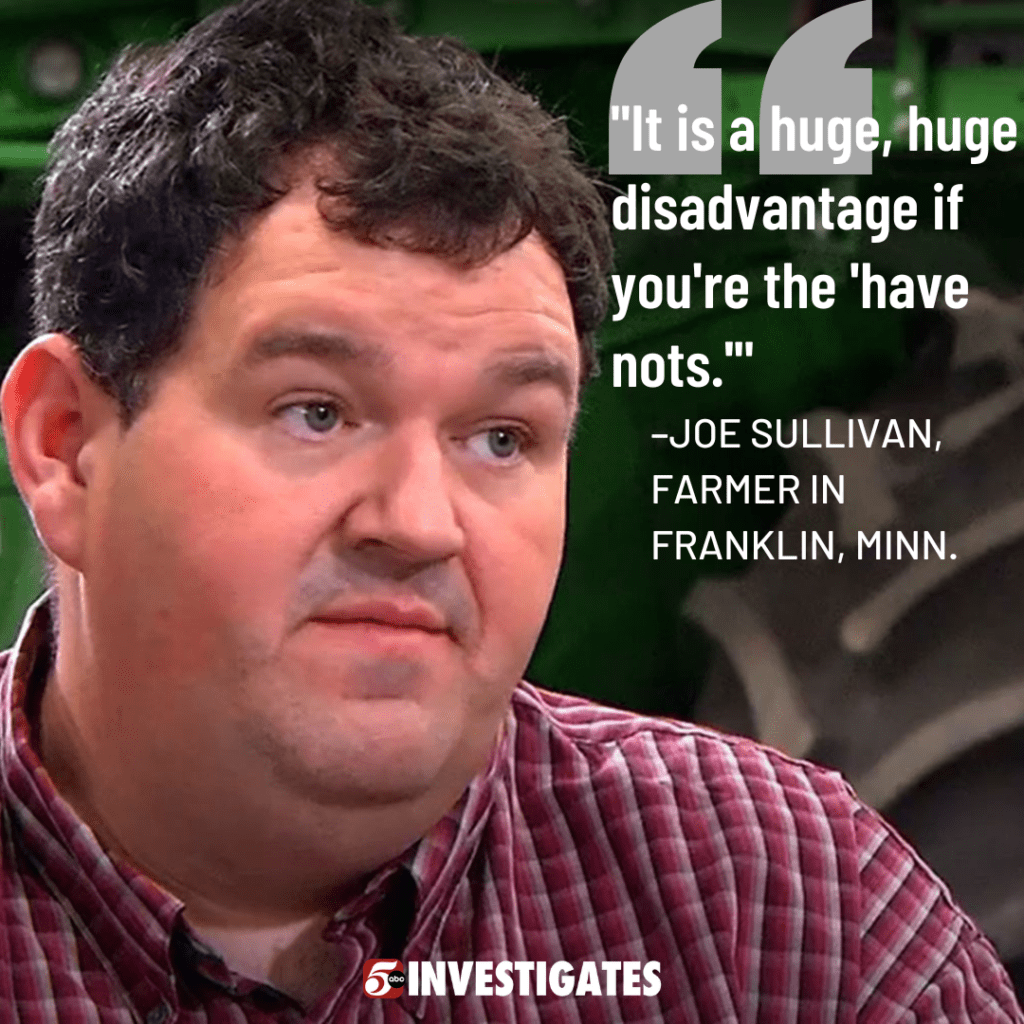Minnesota farmers hope broadband funding finally brings fiber to the farmland
[anvplayer video=”5149433″ station=”998122″]
Growing up, Joe Sullivan envisioned a life behind the wheel of a tractor.
But the farmer from Franklin, Minnesota spends most days at a computer with his smartphone nearby.
An app tells Sullivan the location and status of every piece of equipment on the farm. Software maps every acre of land, revealing detailed information about crop yields and soil health. Each building, including the large pole barns that store tractors, is hooked up to Wi-Fi.
“We’ve been pretty early adopters of technology,” Sullivan said. “It’s a complete game changer once you are connected and can actually utilize all the tools that are out there.”
Many other farmers in rural Minnesota want to incorporate the latest technology into their operations, like Sullivan, but unreliable internet and non-existent broadband infrastructure make that impossible.
Last month, the USDA’s program announced $43 million dollars coming to Minnesota specifically.
“It is a huge, huge disadvantage if you’re the ‘have nots,'” Sullivan said.
One of the biggest challenges to broadband expansion is the cost. For example, in Minneapolis, a mile-long fiber-optic line can connect a hundred homes to high-speed internet service.
The number of households connected justifies the cost to invest in the infrastructure, said Colleen Landkamer, Minnesota’s USDA Rural Development director.
“In rural places, you might have a farm a mile away from another farm,” she said.
To help incentivize internet providers to expand to sparsely-populated areas, the federal government is awarding millions of dollars in grants and loans to broadband projects. Last month, the USDA’s program announced $43 million coming to Minnesota specifically. That funding, according to Landkamer, will help connect 681 farms to high-speed internet.
“It lessens the amount of money that [companies] have to invest to serve areas that really need service,” she said.

The lack of connection is having serious consequences in the agriculture industry, according to a national study published by the United Soybean Board. The research found 60% of farmers surveyed didn’t have adequate internet connectivity to run their businesses.
Rochelle Krusemark, a Martin County farmer who served on the board in 2019 when they published the study, said even more troubling was that a third of farmers reported the lack of internet availability affected business decisions. This ranged from which tractors they bought to which software they used.
“That’s a lot of farmers that want to adopt technology to be more efficient and more sustainable, both economically and environmentally, and can’t do it because they don’t have [an] internet connection,” Krusemark said.
The federal funding comes as the Biden administration continues to push its “Internet for All” initiative, a program that seeks to invest $45 billion toward the goal of providing every American with access to high-speed internet by the end of the decade.
“Broadband is not a want, it’s a need,” Landkamer said. “I don’t think we have the time to wait years to do this.”
In its annual report earlier this year, Minnesota’s Office of Broadband Development reported 224,000 households outside of the metro area did not have access to broadband service.

It’s an issue 5 INVESTIGATES started tracking early in the pandemic when access to high-speed internet became a necessity for families from the Iron Range to farms on the prairie.
“[The pandemic] has definitely showed the glaring ‘haves’ and ‘have nots’ of technology,” said Joe Sullivan.
He was able to upgrade his operation three years ago when a local internet provider built a fiber-optic broadband line on the county road that runs through the farm. Sullivan said uploading a file that used to take an hour now takes just seconds.
But one neighbor, who lives just two miles away, has “DSL at best,” and often has to use a cell phone hotspot to access the internet.
“What used to take days, I could have in minutes,” Sullivan said, sitting at his computer. “So how do we make sure that everyone has that opportunity, no matter where they are?”
[anvplayer video=”5149576″ station=”998122″]